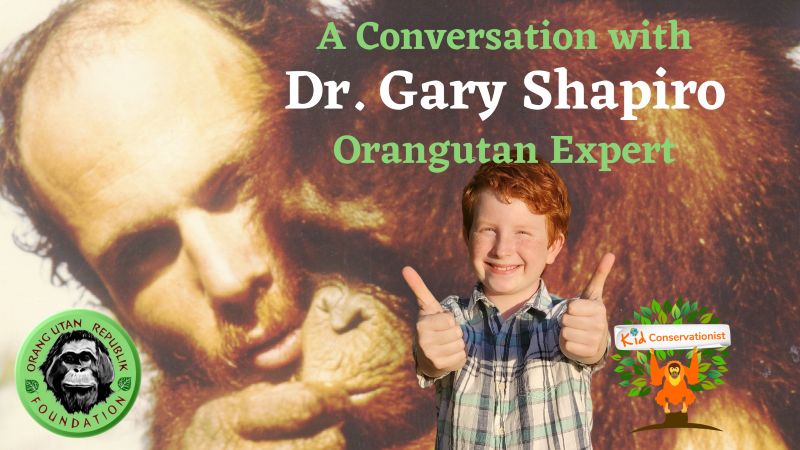by Jack Dalton, OURF Youth Ambassador & Kid Conservationist.
Our future relies heavily on the survival, balance, and conservation of our natural world. We can’t protect our future without incorporating technology. Over the past few decades, more and more technology has been used to propel forward research and education to help protect the planet. I’m only 13 years old, so my life has been heavily intertwined with technology and I have seen the power it has to make a difference. I first got involved with different global orangutan organizations because of technology when a video was posted of me on social media. This video led to me connecting with people, schools, families, and organizations online and around the world. The impact of technology both online and offline can be massive when we put it to the right use.
A man named Gautam Shah has used technology to maximize his impact with the skills he has. Gautam is a video game designer, who realized if people were to care about animals, they had to be reminded of them and how interesting they were every day. He created video games based on real data to spread actual information and get people to care. His apps have educated and inspired many people. One game of his, Unseen Empire, is my personal favorite. I had the opportunity to test this before its release and it was awesome! In Unseen Empire, you set up camera traps, research sites across Southeast Asia, spot and identify species, and so much more. The best part is that it’s based off of the real story of the largest camera trap study in history by David Macdonald and WildCRU, and all of the photos you identify in-game are from this study. It really is amazing data, but it also incorporates the gamified elements that make it a video game. This is one of the most special and unique ways I have ever seen technology used, and I hope that more fact-based games can arise in the future like Unseen Empire.
The data collected in WildCRU’s research study for Unseen Empire came from camera traps. Camera traps are a way researchers have captured the essence of nature through photography and have enabled us to learn more about our wild surroundings. They work by detecting heat and motion, and then taking a photo. When an animal walks, flies, or crawls by, their body heat triggers the camera. Pretty simple, right? Simple, yet amazing and it has helped to track and visually research some amazing creatures. When I was in Indonesia in 2022, camera traps caught the rare sighting of Sumatran Tigers near our camp, and we were moved back to a lodge. Good thing we knew about that! Camera traps are a great invention that has revolutionized research on all types of animals, and they really are the future of conservation.
Videos, especially the use of YouTube, have been used to create connections and spread awareness around the world. As a nine-year-old, I was even able to use this technology to educate both myself and others around the world in a fun and meaningful way through my Kid Conservationist YouTube channel. It’s here that I interview experts in the field of conservation, such as Orang Utan Republik’s Dr. Gary Shapiro, whom I had the honor of speaking to regarding the future of orangutan survival. I also create fun, educational videos, such as my 10 in 10 series, to both educate and inspire people. These videos have reached over 1.2 million views in over 140 countries, and are often used as a resource by teachers and parents.
As technology becomes more and more widely available, the opportunity for education and research becomes accessible like never before. If we take the time and effort to develop these technologies and put them to good use, they can become our biggest assets in the future of conservation. If you want to support this evolution, take some time to subscribe to an educational conservation YouTube channel to help their growth and spread this knowledge, like Kid Conservationist. Try out a conservation video game, or take some time and put up a post on a social media platform about whatever animal or conservation topic you are interested in. You can also donate to research projects and organizations using technology to change our world. Even if these places aren’t using technology, that’s okay. It is an important part of our future, but it is not the only part. Keep spreading the word, and remember, we all have the power to make a difference.

